If you’ve ever owned a bike, you’ve probably had more flat tires than you could count. Most bike owners will agree that, while the thrill of riding hard is worth the trouble, flat tires are still irritating to fix – time-consuming, fiddly work that takes the momentum out of your ride. What if there was a way to get back on the trail faster and easier? It turns out there is, and the answer is with CO2 inflator heads. Here’s everything you need to know about CO2 inflation:
What are the parts of a CO2 inflator?CO2 inflation units consist of two primary parts: The first is the inflator head or the nozzle, and the second is the cartridge itself. The CO2 cartridge contains the gas, and the inflator is the critical tool that attaches to the valve stem to inflate the tire. A cartridge can either be pressed into the inflator head, or screwed into it, depending on whether the head prefers threaded or non-threaded cartridges.
Basically, CO2 cartridges are little cans filled with pressurized carbon dioxide gas. Most are pretty small in size (just about the size of your thumb), making them incredibly easy to store and stash away so you always have a few cartridges handy. Though they’re small, cartridges contain CO2 gas at pressure, so that when they’re attached to the valve of your tire, they fill the tire with gas very quickly – saving you the time and physical effort associated with a manual pump.
What are threaded and non-threaded cartridges?Threaded cartridges have threads included in their design so they can be screwed into the inflator head. Non-threaded cartridges, on the other hand, are simply pushed or pressed into the inflator head, and pierced that way.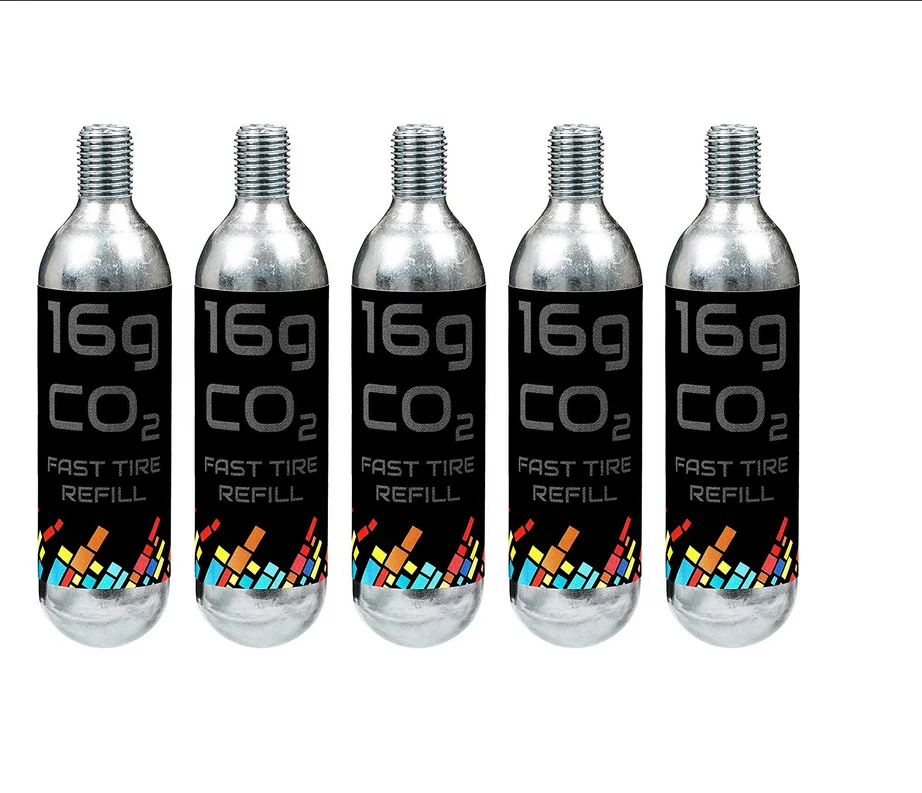 The important point to remember is to be sure and match the cartridge style to the inflator head you’re using.
The important point to remember is to be sure and match the cartridge style to the inflator head you’re using.
That depends on the kind of inflator head you have. Some units dispense air the second the CO2 canister is pierced – often resulting in lost air and frustrated riders who wasted their one shot to get it done (see video above!). More advanced CO2 inflator heads are equipped with flow control that allows you to start and stop the flow of CO2. With a better inflator head, cyclists can choose the flow technology they prefer, including twist-to-inflate, push-to-inflate or trigger controlled.
How do you know what size cartridge to get?CO2 cartridges come in various sizes – there are 16 gram and 20 gram units, among others. Typically, smaller units are ideal for filling road tires and standard bike tires, while larger ones are often used on larger volume 29ers, mountain and fat bike tires.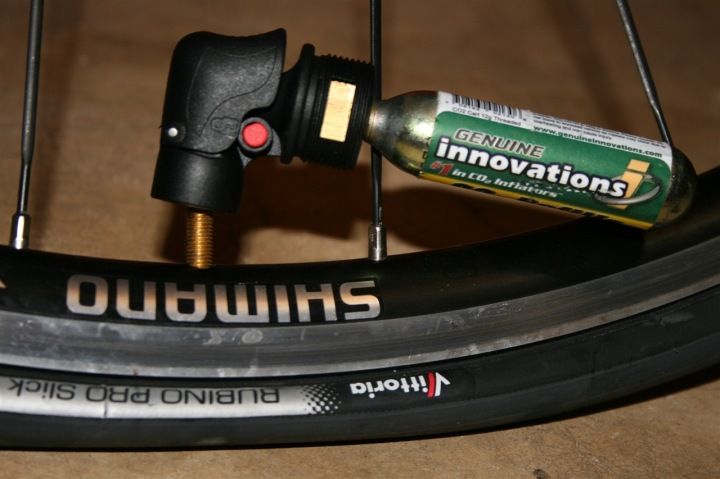 The best way to understand if a cartridge will work for your bike’s tires is to know the correct working pressure for your tires and then reference this handy bicycle tire CO2 inflation chart.
The best way to understand if a cartridge will work for your bike’s tires is to know the correct working pressure for your tires and then reference this handy bicycle tire CO2 inflation chart.
CO2 inflators are hugely convenient, and these are just a few of the essentials you need to cover before you start using them. Give them a try, and enjoy better, faster rides without worry!
JavaScript is disabled. For a better experience, please enable JavaScript in your browser before proceeding.
Jump to Latest
MSW offers a bunch of different CO2 cartridge sizes.
CO2 cartridges are handy as they can get you back pedaling in no time after that unfortunate flat tire.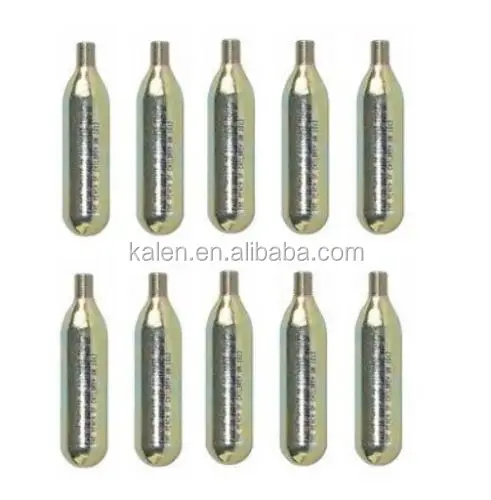 And they can even seal that tubeless setup out on the trail. But how much can they really inflate today's big new tires?
And they can even seal that tubeless setup out on the trail. But how much can they really inflate today's big new tires?
Small 16 gram CO2 cartridges used to suffice for road tires and 26ers but as we moved on to 29ers and bigger tires, we found that 25 gram cartridges were more appropriate for mtb tires.
But now we have fat tires up to 5.0 inches in width and Plus tires up to 3.0 inches. Luckily, these bigger tire sizes are ideal with lower pressure than their skinnier counterparts. In general, with our tubeless setups and knowledge of grip and rolling resistance, many of us have moved to running lower pressure more than a decade ago.
But how much can that CO2 cartridge really inflate your tire? What CO2 size do you need to carry to get you back on the trail without compromise?
This chart details how much each CO2 cartridge size can inflate the different tire sizes available.
CO2 Cartridges
Threaded CO2 cartridges are available in 18, 25 or 38 gram sizes. MSW CO2 Cartridges fit all MSW inflator heads as well as the competitors' inflators.
MSW CO2 Cartridges fit all MSW inflator heads as well as the competitors' inflators.
MSW's CO2 head is so compact, they even turned it into a keychain for a dealer event.
INF-200 AirStream Inflator Head
The AirStream is a lightweight, minimalist compressed air inflator head for your tool kit or jersey pocket.
For more information visit mswbike.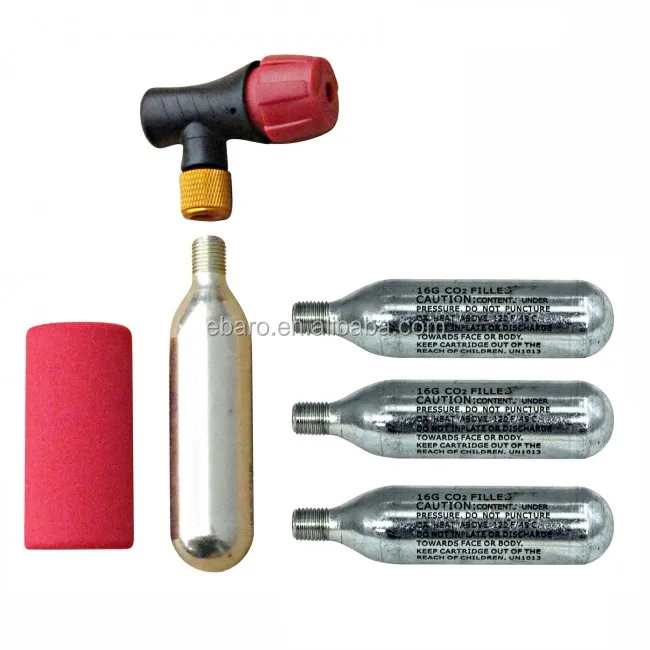 com.
com.
Screen-Shot-2016-08-01-at-12.48.36-PM-e1470082539825.jpg
253.1 KB Views: 9,203
P7250043.jpg
209.7 KB Views: 5,770
P7240097.jpg
263.6 KB Views: 5,948
Francis Cebedo
Founder and Editor of Mtbr.com
Follow View All Authors
Founder and Editor of Mtbr.com
Follow View All Authors
1 - 2 of 2 Posts
Top
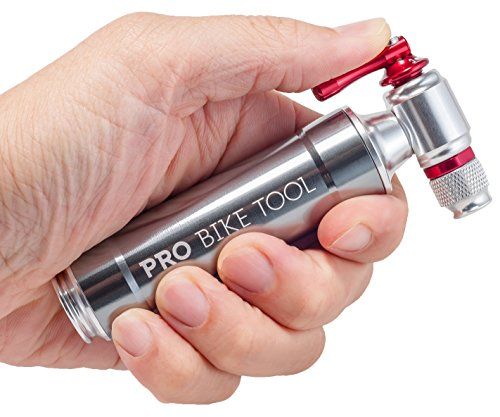
CO2 pumps are an extremely convenient way to inflate tires. The small canister contains compressed carbon dioxide, which is fed into the chamber. This is a quick way to get back on track after a flat tire. nine0022
Our guide below will describe what we think is the best way to install and use a CO2 pump.
Make sure there are no sharp objects in the tire. Check that the tube does not come out of the tire bead. With a simple pump, you can see the leaking chamber in time, with a CO2 cylinder, there is a chance that the chamber will burst if installed incorrectly. It takes about 2 minutes to work
It is important that the valve is in the open position.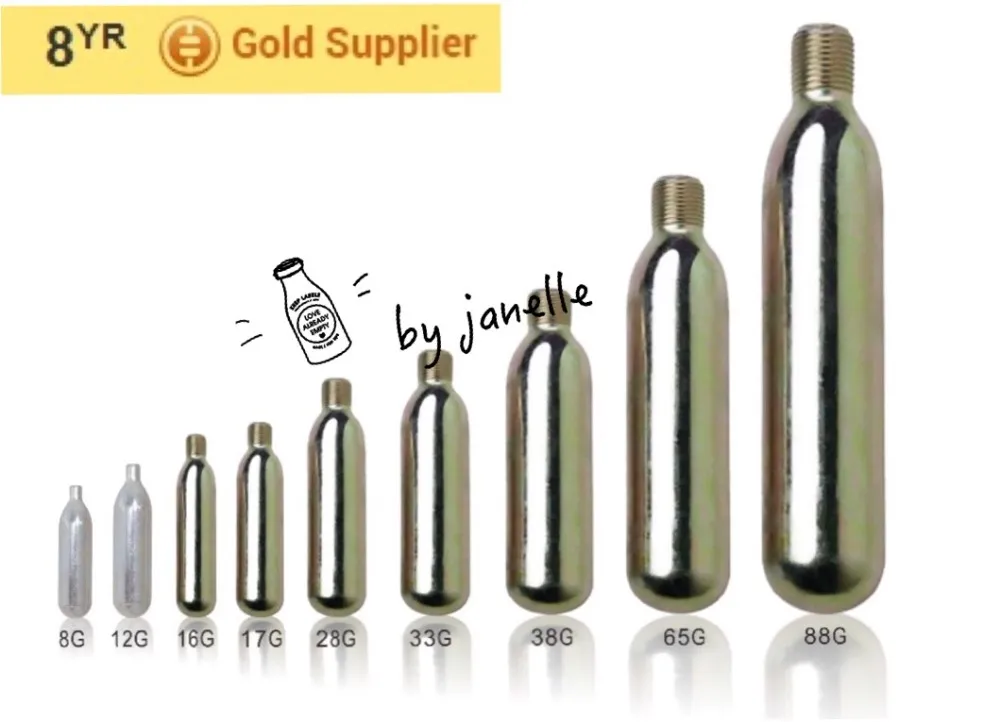 If you install the pump in a closed container, you will waste the cartridge. As an option, store the chambers with an open nipple.
If you install the pump in a closed container, you will waste the cartridge. As an option, store the chambers with an open nipple.
Briefly press the nipple to release some air. Thus, you will purge the nipple from possible particles of sand and dirt.
Most pumps are similar in design. They usually have an on/off trigger for air supply. In the open position of the trigger, you bleed all the air from the cylinder when docking it with the pump.
Pump and cartridge are threaded. Some pumps allow you to store the cartridge for a long time, thereby remaining at the ready. You release the safety, then pull the trigger to release the gas. When storing the pump together with the cylinder, do not forget - there is a risk of accidental opening. nine0022

Continue to screw the bottle into the pump. Inside the threaded hole of the pump is a small tube with a pointed end. This tube will pierce the end of the CO2 cartridge. As soon as the needle pierces the balloon, the gas will rush into the pump.
Then fit the pump firmly into the nipple. Make sure the valve is tight.
While holding the pump head on the nipple, open the valve using the trigger. The air supply will be very abrupt, perhaps with a pop. The cylinder can cool down quickly - it is better to use gloves.
When the gas is applied, the tire will inflate sharply and seat into the rim with a loud click. It is best to use all the air in the tank, and then bleed to the desired pressure.
 In our bike shop you will find quality bike components from the best brands. Do you need something for transmission?
In our bike shop you will find quality bike components from the best brands. Do you need something for transmission? When buying a bike, many people do not even think about the fact that the convenience and comfort when riding it is achieved by correctly selected tire pressure. How the wheels are inflated affects the life of the bike, the speed of riding, the degree of tire wear, safety, control of the two-wheeled friend. nine0022
Many cyclists believe that inflating the tires is only necessary for a good bike ride. However, flat tires have a wider area of contact with the road, which means that grip will be better, but it will be very difficult to accelerate to a speed of 30-35 km / h on such tires.
However, flat tires have a wider area of contact with the road, which means that grip will be better, but it will be very difficult to accelerate to a speed of 30-35 km / h on such tires.
When inflating your tires, you should always consider the type of terrain or surface you will be driving on. If the walk is supposed to be on an asphalt road, the tire pressure of the bicycle should be close to the maximum allowable value. Elastic wheels on a flat surface will provide a smooth rolling and high speed of movement. nine0022
For cross-country riding with unpaved paths, it is better to set the tire pressure to medium tolerable, so that you can ride long distances in comfort and convenience. At high pressure, the grip of the wheel with the road will be minimal, respectively, all holes, pebbles, and bumps on the road will be sensitive. And with flat tires, the likelihood of damage to the wheel or puncture of the chamber increases.
In order to protect yourself on the road, as well as to keep the bike or its individual parts intact, you need to know exactly the lower and upper limits of permissible values, to what pressure the bicycle wheels can be pumped. nine0022
nine0022
Information about tire pressure gives you an advantage when cycling:
Forget the old "old-fashioned" way to check the wheel with your fingers. No need to rely on tactile sensations, trying to feel with your hand the degree of rubber penetration on the tire. The air leaves the wheel gradually, through the pores in the rubber. Within 2-3 weeks, the pressure decreases by 0. 1-0.2 atmospheres, but you cannot determine this with your fingers. The exact value at any time will help determine the pressure gauge that every cyclist should have in his arsenal. With its help, it is simple, with a minimum error, the level of pressure in bicycle tires is measured. A pump with a pressure gauge (floor or manual) will become an indispensable tool for cyclists. nine0022
1-0.2 atmospheres, but you cannot determine this with your fingers. The exact value at any time will help determine the pressure gauge that every cyclist should have in his arsenal. With its help, it is simple, with a minimum error, the level of pressure in bicycle tires is measured. A pump with a pressure gauge (floor or manual) will become an indispensable tool for cyclists. nine0022
There are three standard values in which bicycle tire pressure is measured.
kPa = 14.504 PSI
All these units are used to some extent - in different countries, by different manufacturers. For residents of Russia and the post-Soviet space, the change in bars is more familiar, since this unit is clearly associated with the pressure of the 1st Earth's atmosphere at ocean level. In America and Western Europe, a popular unit is PSI, as they actively use pounds and inches in measurements. Pascals are the least used unit of measurement, but the most modern. Some bicycle manufacturers write data on the wheels about the allowable pressures in all three systems. nine0022
Pascals are the least used unit of measurement, but the most modern. Some bicycle manufacturers write data on the wheels about the allowable pressures in all three systems. nine0022
Manufacturers indicate on the sidewall of the tire how many atmospheres to pump the bicycle wheels. Specifies the range within which the owner of the "iron horse" determines the desired values, depending on the specific factors of riding his bike. Values in the range are labeled from min to max, in two or all three dimensions. Numbers up to 10 are atmospheres (or BAR), tens-hundreds are PSI, and six-digit values \u200b\u200band with the prefix “k” / kilo are Pascals. nine0022
When inflating a wheel, you must strictly follow the manufacturer's recommendations and try not to go beyond both the minimum and maximum pressure levels indicated on the tire. Moreover, it is better to leave a small margin of 0.2-0.5 BAR, both in one direction and in the other, so that the tire does not burst.
The pressure in the wheel is kept by the tire, not the tube, so there is no single standard for its value. There are several significant factors that determine how much you need to pump the wheels on a bicycle. nine0022
The type of tire is determined by the surface of the track on which the cyclist will predominantly ride. Accordingly, the level of inflation of the bicycle wheel will be different. There is a direct dependence on the roughness of the tread and the width of the wheel - the more lugs and the wider the wheel, the lower the pressure should be. Empirically, cyclists quickly determine how many atmospheres should be in the tires of their bicycle
Many cyclists do not realize that air temperature affects the pressure level in bicycle tires. From the course of school physics, we recall that when heated, bodies expand. This means that in hot sunny weather, the pressure inside the air chamber will increase without additional pumping.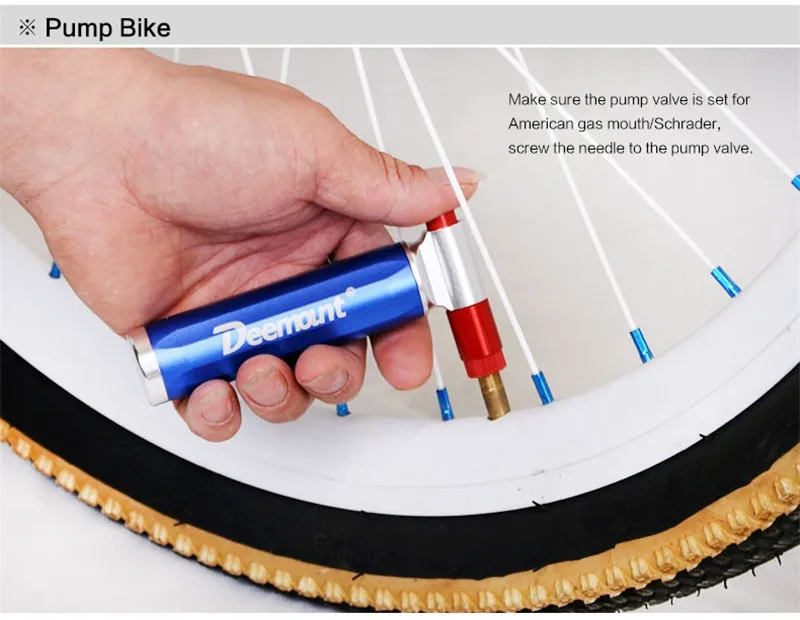 Conversely, on cold winter days, a decrease in tire pressure is quickly felt due to low temperatures. This means that when going on a bike ride in the cold season, the pressure indicators need to be adjusted a little higher than usual, and in the summer heat the air should be bled a little. It is worth noting that when going on a bike ride, you should always take into account the weather conditions. nine0022
Conversely, on cold winter days, a decrease in tire pressure is quickly felt due to low temperatures. This means that when going on a bike ride in the cold season, the pressure indicators need to be adjusted a little higher than usual, and in the summer heat the air should be bled a little. It is worth noting that when going on a bike ride, you should always take into account the weather conditions. nine0022
It is important to take into account the load on the bike created by the weight of the rider, especially the fact that most of it is on the rear wheel. Therefore, the degree of its pumping should be slightly higher than the front, the optimal difference is 10%.
To calculate the optimal tire pressure for a bicycle, given the weight of its rider, you can use the table:
Rider weight (kg) Pressure (atmosphere) Pressure (PSI)
The nature, riding style and type of bicycle also affect tire pressure.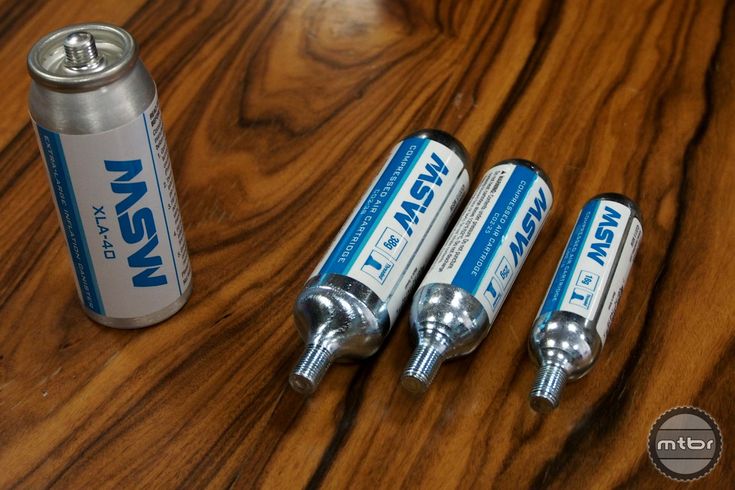 Buyers who prefer an active pastime often opt for mountain bikes with 26-inch wheels, which ride well both on city streets and in rough terrain.
Buyers who prefer an active pastime often opt for mountain bikes with 26-inch wheels, which ride well both on city streets and in rough terrain.
To understand to what pressure to inflate the wheels of a bicycle, it is necessary to take into account the features of both the bike itself and other, at first glance, weightless factors. For example, weaving threads on a tire, rim thickness, driving style. The likelihood of a tire coming off a wide rim is much less than a narrow rim, because a wider rim will hold the tire better than a thin one. Mountain biking already by its name suggests the presence of a difficult surface on the track, with possible obstacles and bumps. The driving style is more aggressive than on a smooth, calm trajectory, it obliges you to increase the tire pressure to a level slightly less than the upper limit. nine0022
The diameter of the wheel will also influence the selection of the optimal pressure value, since the larger it is, the higher the volume of air pumped will be.